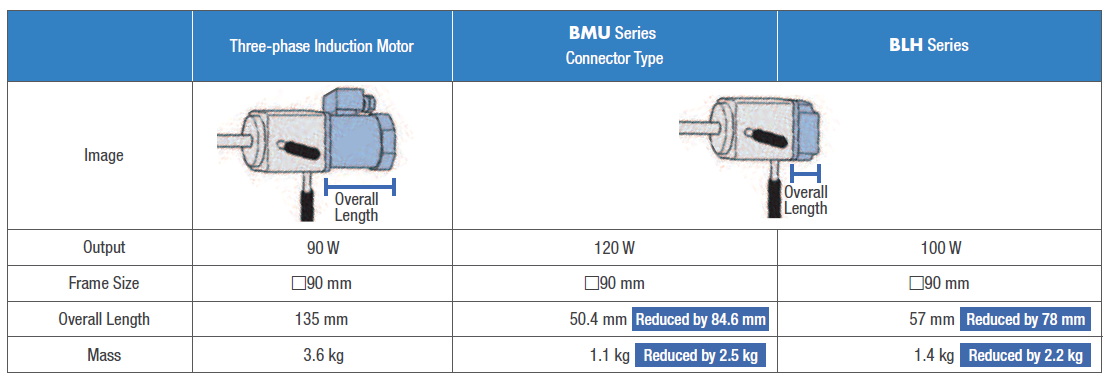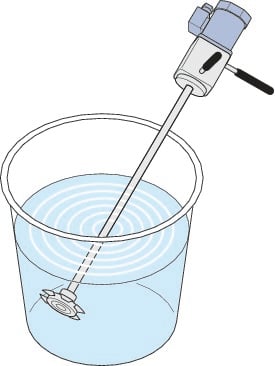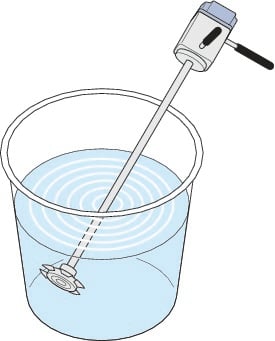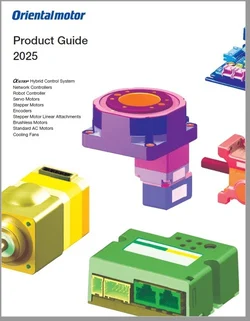The viscosity change in liquids can vary the torque required for mixing. For AC asynchronous motors such as AC induction motors, the rated speed is affected by load torque fluctuations, which may cause inconsistency in the final product. Is there a better motor for the job?
| Challenge | Mixing liquids of different viscosity at stable speeds |
|
|
Conventional Equipment We show a traditional hand-held mixer here. Typically, a 3-phase AC induction motor is selected as the motion device for a mixer. A variable frequency drive (VFD), or inverter, is used to control the speed of the motor. |
Problems with Conventional Equipment
The viscosity can change during mixing. This causes the load torque to fluctuate, which changes the speed of the motor, resulting in inconsistent quality.

| Solution | Use a brushless motor with closed-loop feedback |
Brushless motors operate with closed-loop feedback from hall-effect sensors. This ensures tight speed regulation even with load fluctuations. Compared to AC motors, brushless motors are also much more efficient and therefore more compact. The constant torque output from brushless motors also ensures the same torque being applied (up to rated speed). Brushless motors also offer a wider speed range when compared to AC motors driven with VFDs.
|
|
Brushless Motor Benefits
|
Smaller and Lighter Design
Upgrade an AC motor to a brushless motor for smaller and lighter designs. More details can be found in the comparison table below.
Comparison Between AC Induction Motors and Brushless Motors (Round-Shaft Type)


Thanks for reading this post. Here are some videos for the products discussed in this post.
Here's a video introducing brushless motors as the new standard in speed control.
Here's a video of a BMU Series brushless motor with its speed controller (driver) on a belt conveyor.
Here's a video of BLH Series brushless motors demonstrating driving and steering in an AGV.
Please subscribe to receive my new posts.









